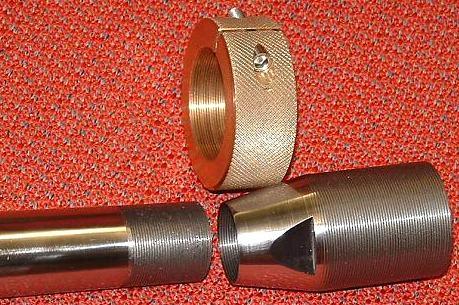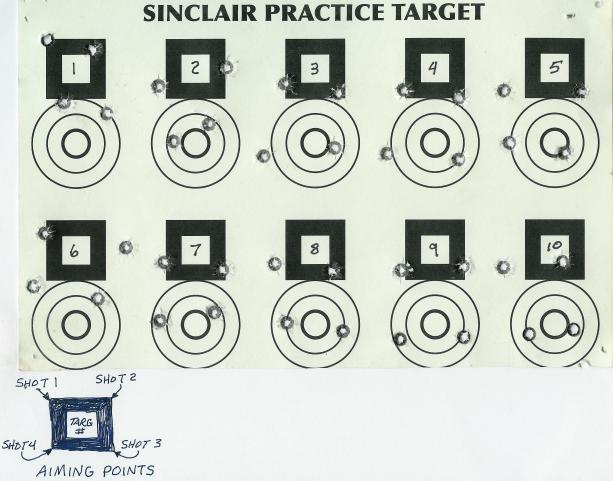Lets do another one: a 7.62x51 FAL shooting a 160gr match bullet just shy of 2800fps. Rifle weighs 8.75lbs, probably going close to 10lb with a 20rd mag.
Muzzle energy is 2785ftlb The rifle itself will recoil at 23.6 fps and will move 0.35" during the time the bullet is in the barrel (close to 1.2ms for a 21" barrel). Again, with the shooter prone and aligned with the rifle and weighing 225lb, the recoil velocity is 4.87 fps, the rifle and shooter move 0.070" during the 1.2ms that the bullet is in the barrel. Again, I do not have any empirical formulas for the muzzle blast and it affects mainly the shooters nerves as well as the time to get off a second shot.
Finally, lets look at the 5.56 nato: Here the rifle weight is probably 6.5lb. With a 50gr bullet traveling at 3500 fps from a 16" barrel (may be a bit optimistic) the muzzle energy would be 1360ftlb. With the rifle being so light, it would recoil at a velocity of 20.46fps and would move 0.23" during the 1ms that the bullet was in the barrel. With the shooter "attached" weight 225lb, these numbers change to 3.43fps and 0.040" of rifle/shooter movement in 1ms.
Clearly, the perceived recoil of these various scenarios is substantially different and anyone who has shot them would attest to that fact, muzzle brake or not. All are normally fitted with muzzle brakes to begin with, given their use by soldiers in combat, where follow up shots are important. Anyone should be able to guess which will be easier and more accurate to shoot with limited experience: It will undoubtedly be the 5.56. Too bad the bullet runs out of steam before it has gone too far and that you have to shoot the Somali bad guys several times to put them down. Thats the "NFL" (no free lunch) rule coming right back at you. The FAL in 7.62x51 has decidedly more "kick" than the 5.56, and the ammo is bulkier and heavier, but it has double the muzzle energy and will put most bad guys down in 1 shot compared to the 5.56. But it can be mean enough to scare some shooters into flinching etc, particularly when it has a short barrel, folding stock etc.
Finally, most of us will never graduate to the 50bmg level. The rifle is too punishing both physically, acoustically, mechanically (carrying it and the ammo) and most of us would shoot it real lousy too, compared to a softer shooting rifle.
Yes, recoil has an effect on accuracy. The higher the muzzle energy, the harder it will be to shoot the weapon well. Given that high muzzle energy rounds are intended for either long range shooting or for instant stopping power on dangerous game at close range (2 very different applications) the first will take a great deal of skill to master, whereas the second takes mainly good mental focus and cool nerves.
Unfortunatly because of my location I am kind of limited as to where I can take it. I am going to ask the gun dealer that I have ordered my 110ba from as to who he would send it to if it were his. Got a feeling I'm going to be shipping it out. Any suggestions for the central interior of B.C. welcome. (sorry to the OP about the hijacking)



